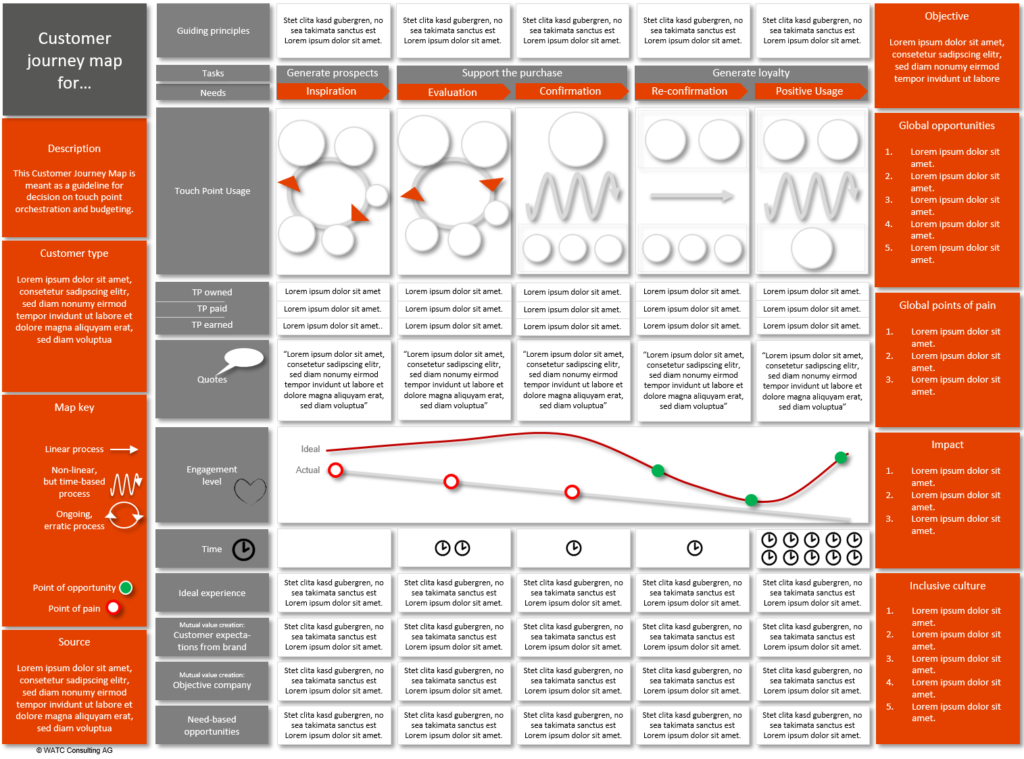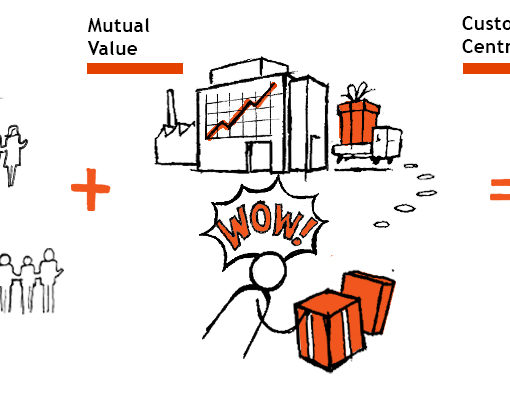 The sense of customer journey maps
The sense of customer journey maps
Customer journey maps summarise the buying process of customers or customer segments based on market research findings. Thereby, the map shows where the experience of the customer begins and where it ends, how the interactions with the respective product or service look like, and how those touchpoints either destroy or benefit the value for the customer. We found that managers often rely on their gut feeling or act based on past experiences. This is exactly where customer journey maps step in – to show us what customers want and why specific measures should be introduced. Thereby, the customer journey provides a map for the whole organisation – an orientation guideline so to speak. The company can see for example where sales are lost, which personas to prioritise, or which touchpoints still need to be allocated to the responsible department.
Combine your observations – Customer Centricity, Playbook & Roadmap
By combining the journey maps of different target groups within a Playbook, we additionally deliver our clients comprehensive recommendations for concrete actions. Thus, a consistent mindset of specific customer needs can be established within the employees of a firm as customer journey maps have the power to create a company-wide vision. In that sense, they break down silos and are essential for companies to become a truly customer-centric organisation. Where, when and how those actions are implemented will again be pictured within a Roadmap.
The design of customer journey maps
But what does an ideal and useful journey map look like? There are certainly different methods. From our point of view, important elements of a customer journey map include touchpoints, quotes from customers, the time horizon for each step, the engagement level of the customer, customer needs and pain points as well as the impact those changes can have. In our case, a customer journey map was used to highlight the buying process of an automobile manufacturer. The map summarised that the website should be used as main guiding tool for the customer and that the role of the dealer was not yet aligned with customer expectations. Alterations based on those findings will potentially lead to higher loyalty- and WoM-scores. The Nielsen Norman Group provides another interesting approach on how to design customer journeys by highlighting key elements and by providing useful designing rules. Please click here to read the full article.
 The sense of customer journey maps
The sense of customer journey maps


